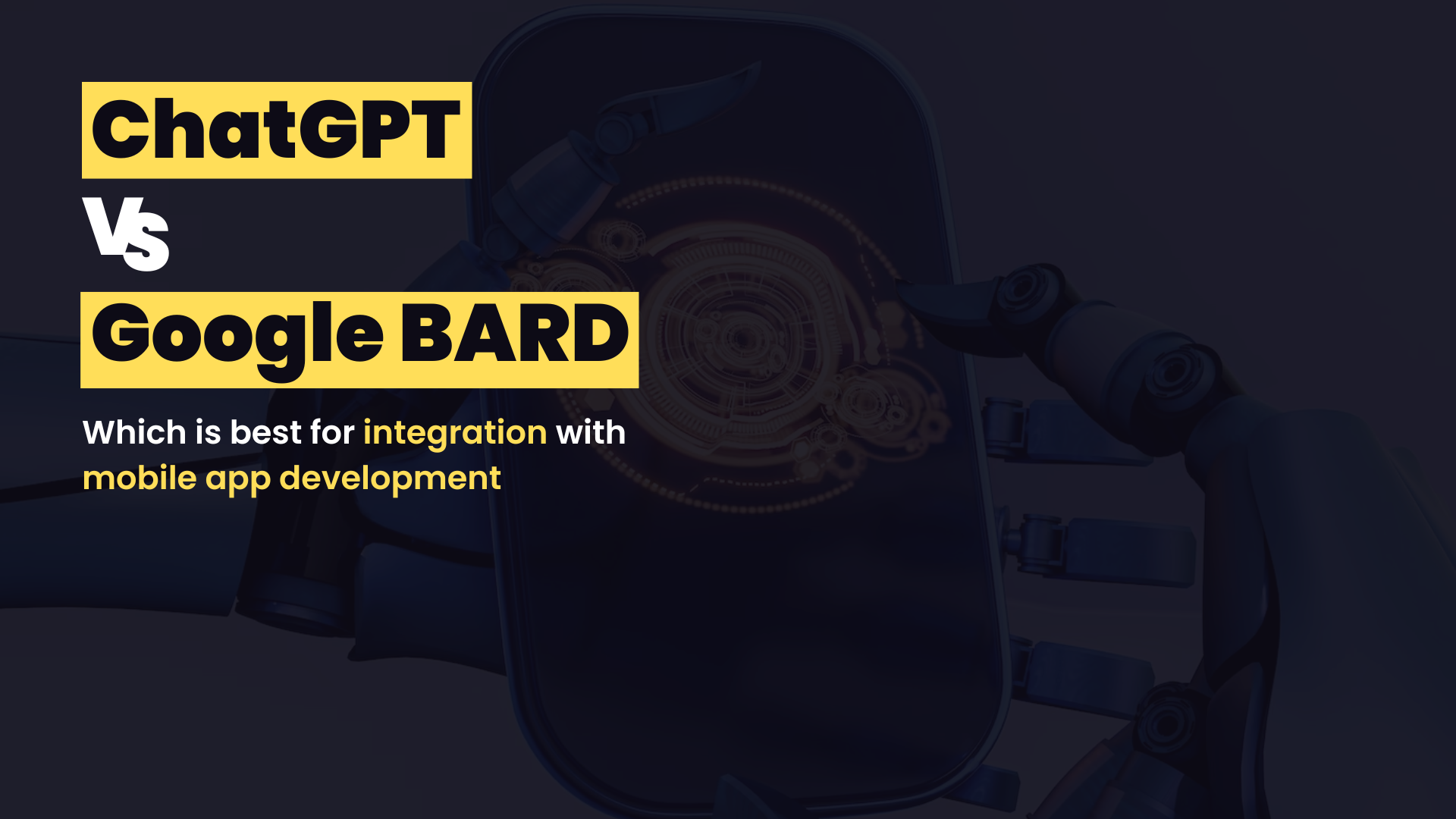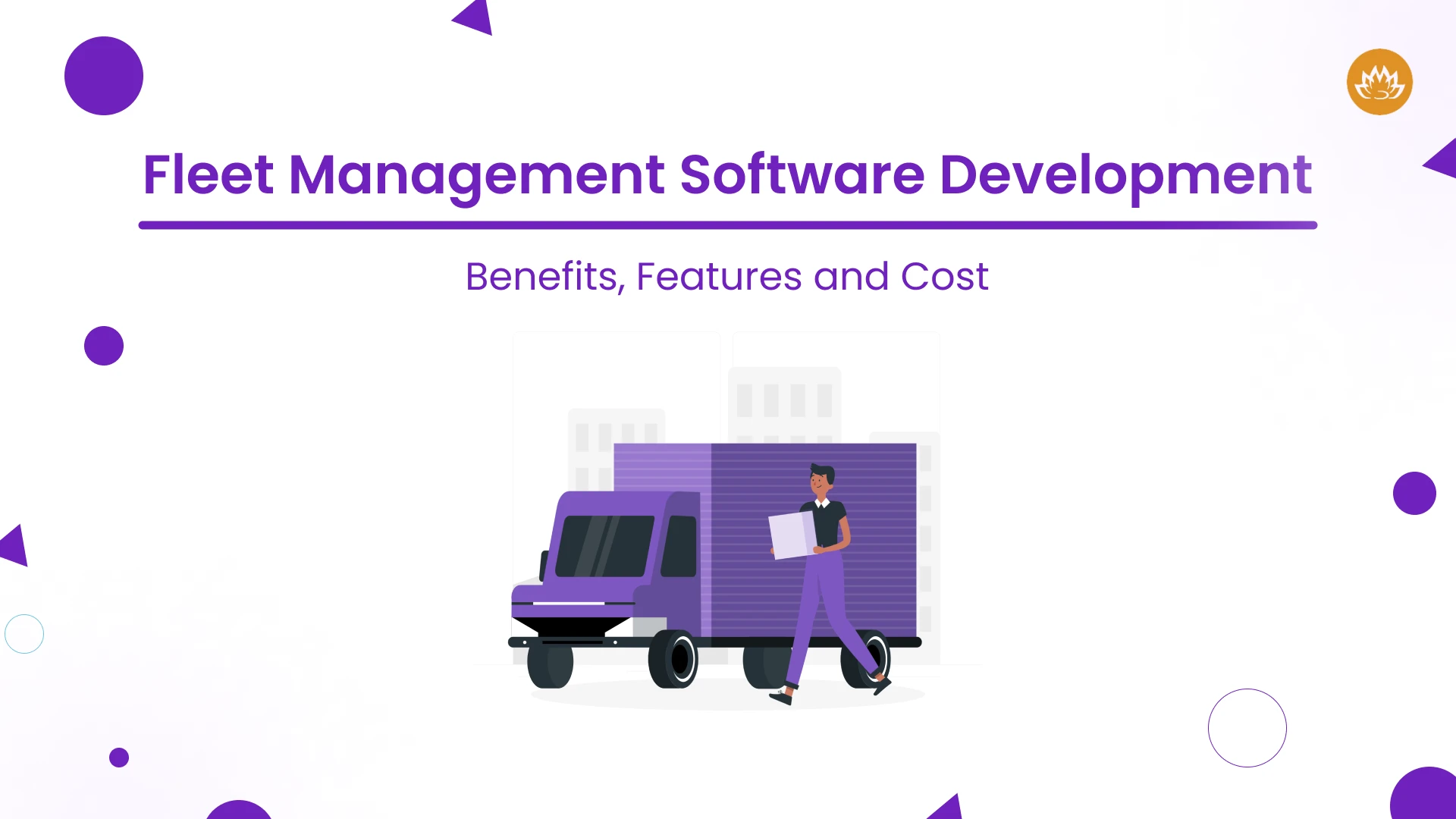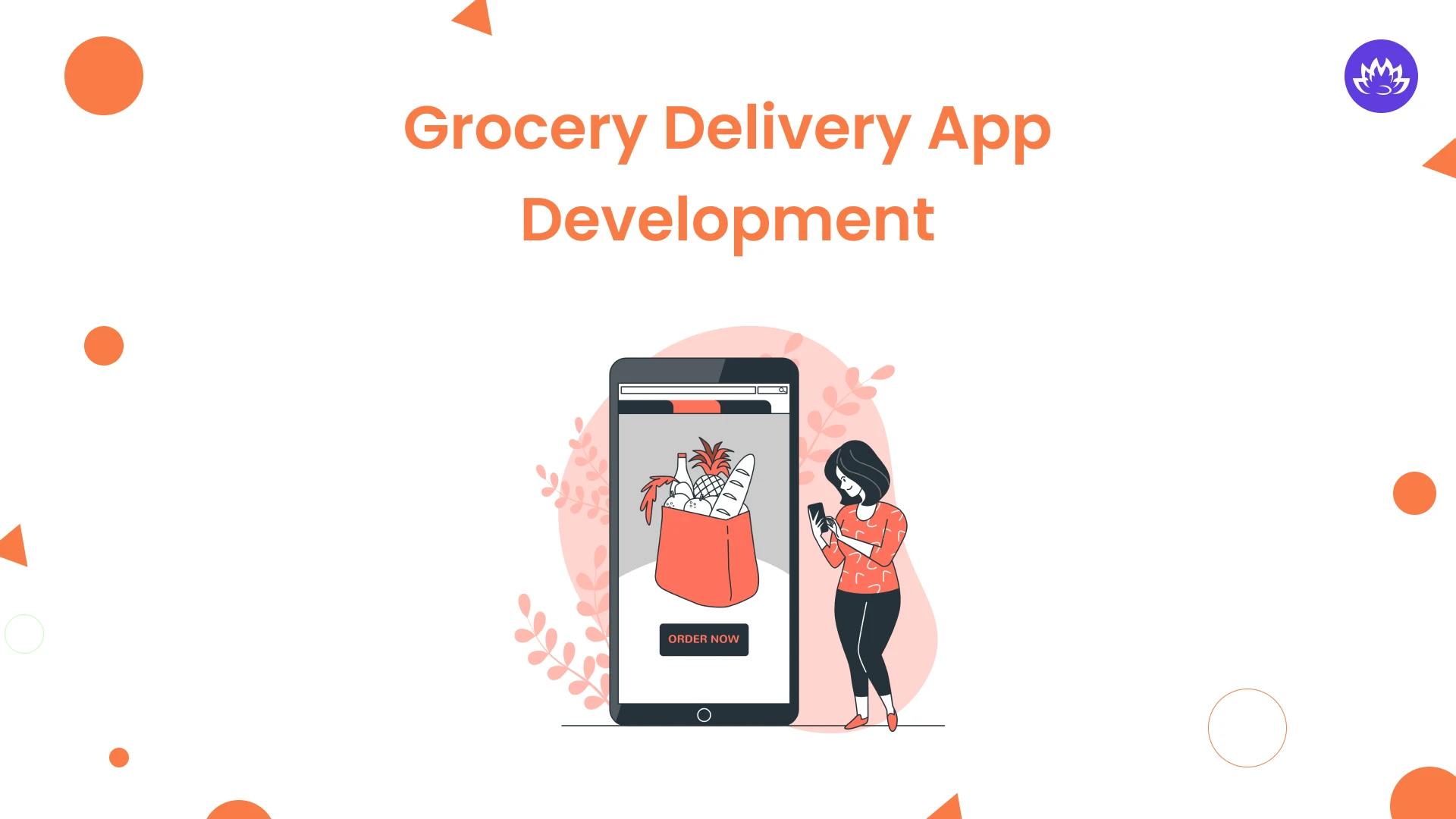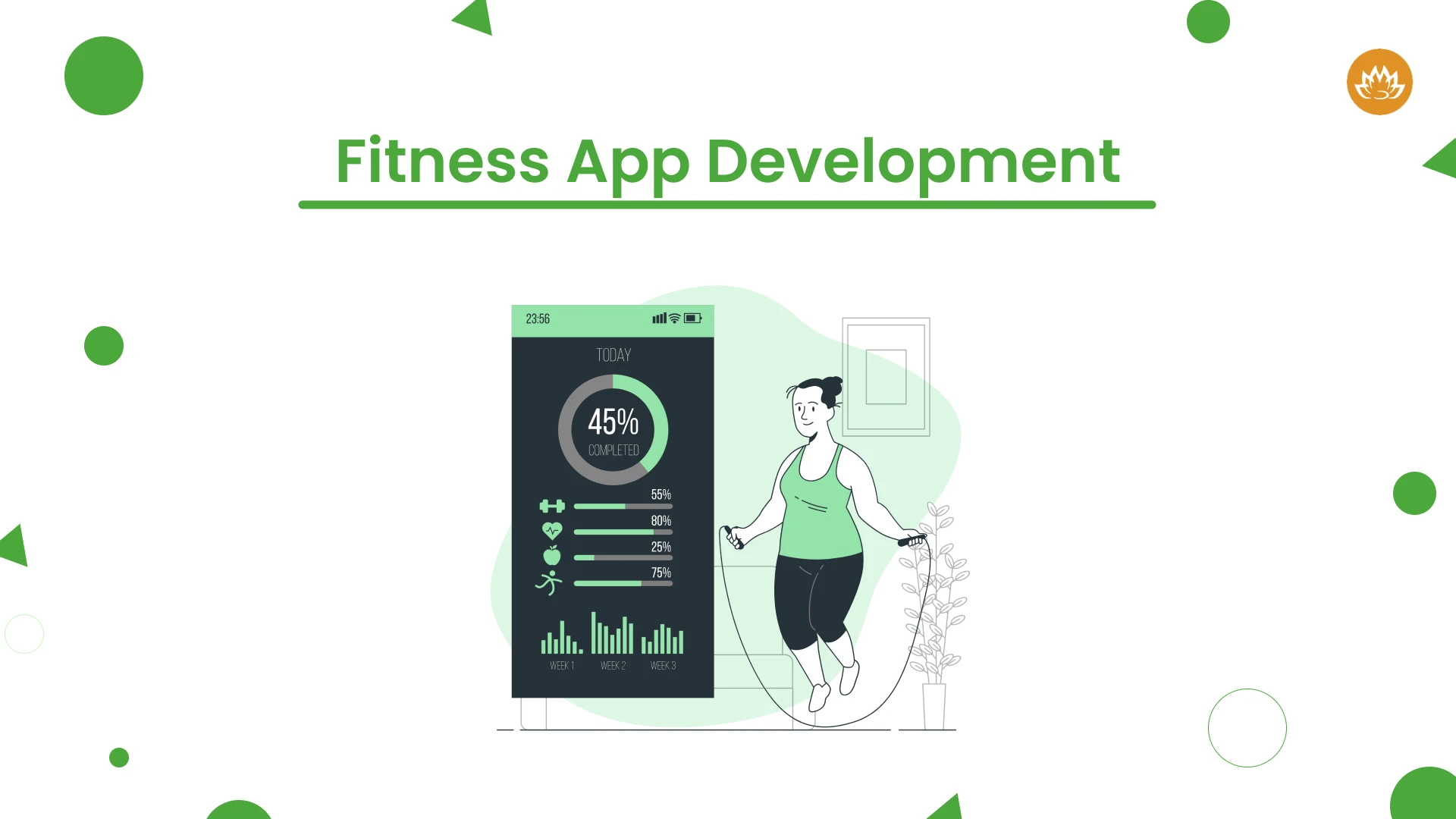As businesses strive to enhance customer interactions, chatbots have emerged as a popular solution. These automated computer programs simulate human conversations, offering personalized experiences. Being the top mobile app development company in India, we are harnessing the power of chatbot development and integration, and are constantly exploring the capabilities of ChatGPT and Google BARD to create intelligent chatbot solutions. In today’s digitally-driven landscape, a robust online presence is vital for business success, necessitating reliable and user-friendly website and app development tools. Among the notable options are ChatGPT and BARD. While BARD facilitates rapid app creation without coding, ChatGPT leverages AI to replicate human-like interactions. To make informed decisions about website and app development, it is crucial to evaluate the advantages and limitations of these AI language models. By understanding their features, businesses can determine which tool aligns best with their specific needs and goals.
What is ChatGPT?
ChatGPT, developed by OpenAI in November 2022, is a sophisticated language model renowned for its ability to generate human-like responses using deep learning techniques. Its transformer architecture and extensive training data enable it to produce coherent and fluent replies across multiple languages. With its vast knowledge base and large model size, ChatGPT excels in content creation, chatbot development, and even poetry generation. It possesses the remarkable capability to independently understand and provide insightful comments on various topics, making it an invaluable tool for generating engaging content and maintaining dynamic conversations.
What is Google Bard?
Designed primarily for customer service applications, Google BARD is a chatbot that distinguishes itself through its structured information-based approach. By leveraging a vast training dataset encompassing product and service features, customer feedback, and support requests, BARD excels at delivering precise and tailored solutions. Its emphasis on organized knowledge allows it to provide accurate responses, making it an ideal choice for technical assistance and customer support. By minimizing the need for human intervention, BARD ensures timely and efficient service, greatly benefiting customers in receiving relevant and reliable assistance.
Benefits and Limitations of Using ChatGPT in Mobile App Integration
Benefits:
- Enhanced Customer Engagement: By integrating ChatGPT into mobile app development, businesses can provide personalized and responsive communication, boosting customer engagement and satisfaction. The ability to customize ChatGPT ensures relevant and engaging content specific to the industry or audience.
- Saves Time: ChatGPT reduces response time, handles multiple requests simultaneously, and eases the workload of human support teams. Its natural language generation capabilities save time and resources by producing high-quality written content like articles and summaries.
- Cuts Down Costs: Automating common and repetitive tasks through ChatGPT reduces the cost of customer support, eliminating the need to hire additional staff or contractors for content production.
- Consistent in Giving Responses with Accuracy: ChatGPT provides reliable and consistent answers to frequently asked questions, ensuring users receive accurate information every time.
- Highly Scalable: ChatGPT can handle an unlimited number of queries and requests without requiring additional staff, making it suitable for businesses of all sizes.
- 24/7 Availability: ChatGPT offers continuous support to users, even outside regular business hours, improving customer service and satisfaction.
- Multilingual Support: With the ability to communicate in multiple languages, ChatGPT enables businesses to reach a global audience effortlessly.
- Data Analytics: ChatGPT gathers and analyzes user interaction data, enabling businesses to gain valuable insights and improve their services.
- Amplifies Customer Satiafaction: Through personalized and efficient support, ChatGPT enhances customer satisfaction, leading to increased loyalty and retention.
Limitations:
- No Human Touch: ChatGPT, being an AI language model, lacks the human touch, which may result in misconceptions and less clear communication, potentially impacting the user experience.
- Restricted to Confined Understanding Level: ChatGPT may occasionally struggle to grasp the context in which text is being used, leading to inaccurate suggestions or answers that can frustrate users.
- Data-based Results: The quality of the training data used for ChatGPT affects its performance. Biased or incomplete training data can result in inaccurate or inappropriate responses, particularly if the data does not align closely with the website or app’s specific topic or industry.
- Cant Perform Complex Tasks: While ChatGPT excels at generating text, it may not be suitable for complex tasks such as managing user accounts or processing payments, often requiring additional specialized software or services.
- Not Highly Secured: ChatGPT’s guarantee of user data confidentiality may vary, raising potential risks of data breaches or other security issues.
Benefits and Limitations of Using Google Bard in Mobile App Integration
Benefits:
- Develops and Deploys Quickly: Google BARD automates repetitive tasks in web and mobile app development, providing developers with powerful tools for creating complex applications quickly and efficiently. The comprehensive code editor, debugging tools, and integration with Google Cloud Platform and Google Analytics save time and streamline the development process.
- Powerful Analytics: Google BARD offers a suite of analytics tools to analyze user behavior, track conversions, and identify optimization opportunities, allowing developers to improve performance and usability.
- High Scalability: BARD is scalable, capable of handling projects of any size, from small web apps to enterprise-level systems.
- Various Reporting Tools: Real-time reporting tools in BARD enable developers to monitor application performance, troubleshoot issues, optimize performance, and make informed decisions for future development efforts.
- Collaboration: BARD facilitates collaboration among development teams, providing version control, code review, and integration with collaboration tools like Slack and Google Drive, ensuring seamless teamwork and high-quality code production.
- Cutting Down on Costs: By automating development and deployment processes, BARD reduces costs and is suitable for organizations of all sizes.
- Highly Secured: BARD incorporates best practices for securing web applications and mobile apps, ensuring that developers can build secure applications by default. Built-in security features such as automatic HTTPS, secure cookies, and secure storage for sensitive data enhance the overall security of the developed applications.
Limitations:
- Consumes Time: Developing websites and apps with Google BARD can be time-consuming, especially for larger projects. The entire process of app development can turn out to be laborious and can turn out to be impractical, especially for small companies dealing with low-scale projects that are not much funded.
- Mainly Dependent on Google: Since Google BARD is a proprietary technology developed by Google, developers must rely on Google for updates and support. This reliance on a single provider may be a concern for some businesses that prefer to have more control over the development process.
- Needs Membership: While many Google BARD products are free, certain features or services may require a membership or purchase. Additionally, employing engineers with expertise in Google BARD may be more costly compared to recruiting experts familiar with other software development platforms.
- Can Turn Complicated for Beginners: Google BARD can be complex, especially for those who are new to the platform. It demands a high level of technical skill, and developers must invest significant effort into learning and implementing it effectively.
- Limited Customization: Google BARD provides established procedures and workflows that may not meet all development requirements. Developers may find it challenging to customize the tool to suit their individual needs, restricting their freedom and control over the development process.
Let us explore more into the technical aspects in depth
Using ChatGPT and Google Bard for Chatbot Integration
Chatbot app development is a transformative journey that involves creating intelligent conversational agents capable of interacting seamlessly with humans using natural language. This innovative approach has gained significant traction among businesses, serving as a valuable tool to deliver exceptional customer service and elevate the overall customer experience. Chatbots have versatile applications, ranging from customer support to sales and marketing, offering businesses invaluable benefits such as time and resource savings, error reduction, and heightened operational efficiency.
API Integration for Seamless Communication
Integrating ChatGPT and Google BARD into chatbot app development involves leveraging their APIs to enable seamless communication between the chatbot and the AI models. API integration allows the chatbot to send user queries to the models and receive the generated responses in real-time. This integration ensures that the chatbot can harness the power of ChatGPT and Google BARD to deliver accurate and engaging conversations.
Enhancing User Experience with Natural Language Processing
Natural Language Processing (NLP) plays a crucial role in chatbot app development with ChatGPT and Google BARD. By incorporating NLP techniques, chatbots can understand and interpret user queries more effectively. This enables them to generate relevant and meaningful responses that closely resemble human conversation. The integration of ChatGPT and Google BARD empowers chatbots with advanced NLP capabilities, enabling them to provide a more natural and intuitive user experience.
Creative Text Generation for Engaging Interactions
Text generation is a key aspect of chatbot app development, and both ChatGPT and Google BARD excel in this area. These AI models have been trained extensively on diverse datasets, allowing them to generate creative and contextually relevant responses. This capability enhances the chatbot’s ability to engage users in meaningful conversations, making the overall interaction more enjoyable and satisfying.
Developer Tools for Efficient Development Process
Both ChatGPT and Google BARD provide developer tools and resources that facilitate the chatbot app development process. These tools include software libraries, documentation, and pre-trained models that developers can leverage to accelerate development and streamline implementation. The availability of comprehensive developer tools ensures that chatbot app development with ChatGPT and Google BARD is efficient and effective.
Seamless Integration with Voice Assistants
Integrating chatbots developed with ChatGPT and Google BARD with voice assistants expands the reach and accessibility of the chatbot app. Voice assistants such as Amazon Alexa or Google Assistant can leverage the chatbot’s capabilities, allowing users to interact with the chatbot using voice commands. This integration enhances the user experience by providing a convenient and hands-free interaction method.
The Power of Dialog Systems: Choosing Between ChatGPT and Bard for Mobile App Development
The integration of advanced dialog systems like ChatGPT and Bard has emerged as a game-changer. These cutting-edge technologies offer businesses an opportunity to create intelligent chatbots that can revolutionize customer interactions and enhance overall user experience. However, the choice between ChatGPT and Bard depends on specific project requirements and considerations.
Tailored Solutions with ChatGPT:
ChatGPT empowers businesses to build highly customizable chatbots that are trained on specific datasets. This flexibility allows for a more personalized and accurate response to user queries, enhancing user engagement and satisfaction. With ChatGPT, mobile app solutions can be designed to provide real-time, tailored support, ensuring customers receive prompt assistance. The ability of ChatGPT to handle multiple conversations simultaneously lightens the workload of customer support teams, leading to improved efficiency and reduced costs.
The Coherence of Bard:
On the other hand, Bard, developed by Google, offers remarkable coherence and fluency in generating natural language responses. Its integration in mobile app development enables chatbots to provide coherent and context-aware interactions, enhancing the user experience. By leveraging Bard, businesses can create chatbots that learn from previous conversations, continuously improving their responses over time. This adaptive nature of Bard ensures that the chatbot evolves and provides increasingly accurate and valuable information to users.
Challenges in Chatbot Development:
While both ChatGPT and Bard offer immense potential, there are challenges and limitations to consider. One such challenge is ensuring that chatbots accurately understand complex or ambiguous user queries. Designing chatbots capable of handling multiple conversations simultaneously, without losing context, is another obstacle to overcome. These challenges require meticulous attention during the development process to deliver optimal performance.
Training Data and Bias:
Integration of ChatGPT and Bard necessitates large volumes of training data, which can be time-consuming and costly, particularly for smaller businesses. Additionally, there is a risk of bias in the data, which may lead to biased responses from the chatbots. Careful curation of diverse and unbiased training datasets is crucial to mitigate such risks and ensure fair and accurate chatbot interactions.
Whitelotus Corporation: Pioneering Chatbot Mobile App Development
At Whitelotus Corporation, we leverage the power of natural language processing (NLP) and artificial intelligence (AI) to overcome these challenges and limitations. Our expert team utilizes NLP techniques and AI algorithms to develop chatbots that understand user queries accurately and improve their responses over time. We prioritize the collection of diverse and unbiased training data to create chatbots that provide fair and relevant information to users.
By understanding your specific project requirements, Whitelotus Corporation combines the strengths of ChatGPT and Bard to design chatbot solutions that offer exceptional user experiences. Our approach ensures seamless integration, enhanced user engagement, and increased customer satisfaction within your mobile app development journey. Hire Developers from India by collaborating with Whitelotus Corporation to bring cost-effective and top-tier talent to your chatbot app development, ensuring the delivery of innovative solutions that align with your business goals and exceed customer expectations.
Also Read:
- The Rise of Chatbots: A Journey into Artificial Intelligence Conversations
- Hire Dedicated Remote Developers from India in 2023
Author
-

Sunil is a result-orientated Chief Technology Officer with over a decade of deep technical experience delivering solutions to startups, entrepreneurs, and enterprises across the globe. Have led large-scale projects in mobile and web applications using technologies such as React Native, Flutter, Laravel, MEAN and MERN stack development.
View all posts













